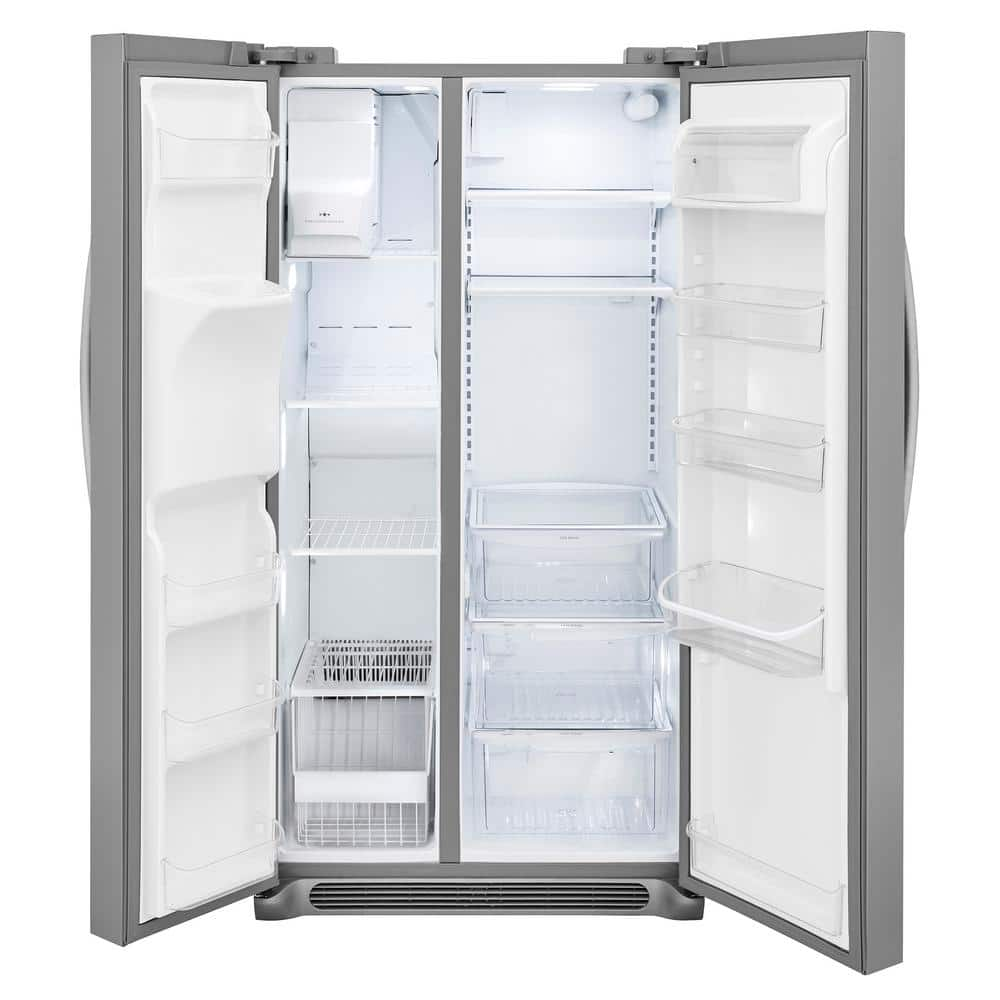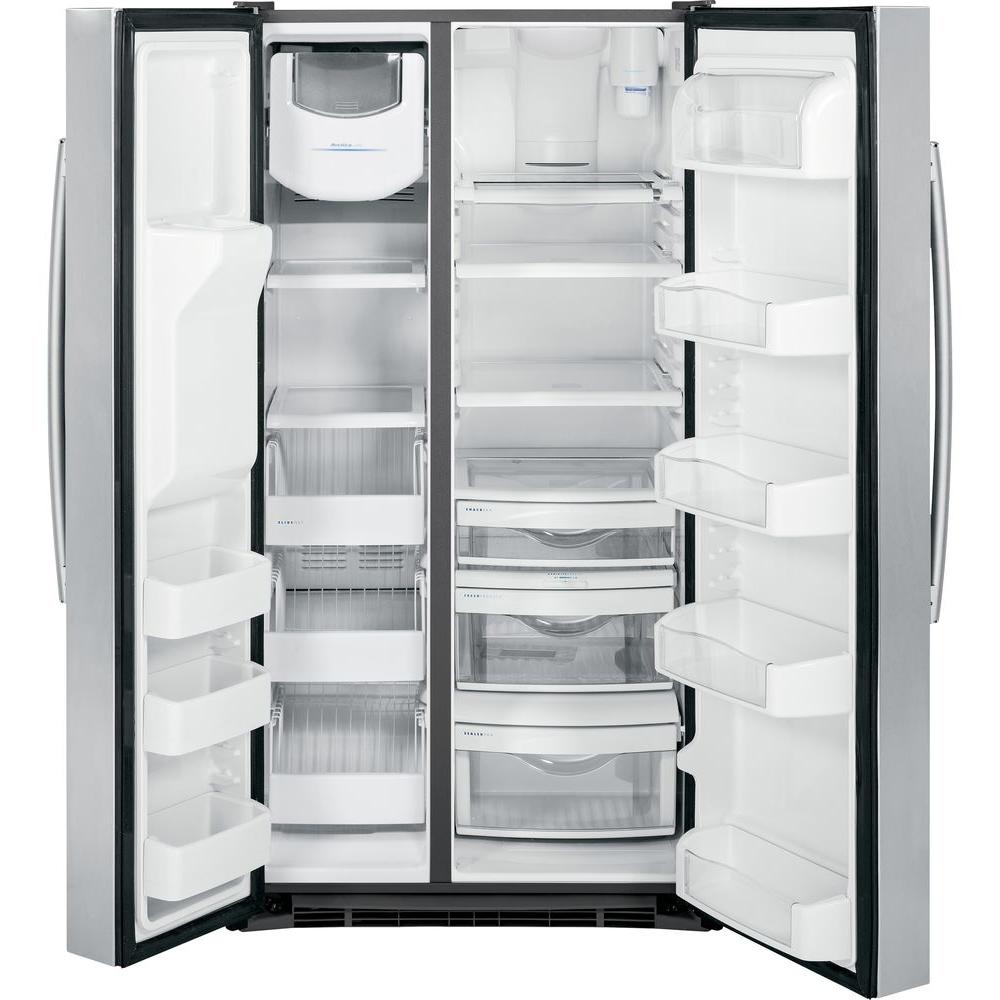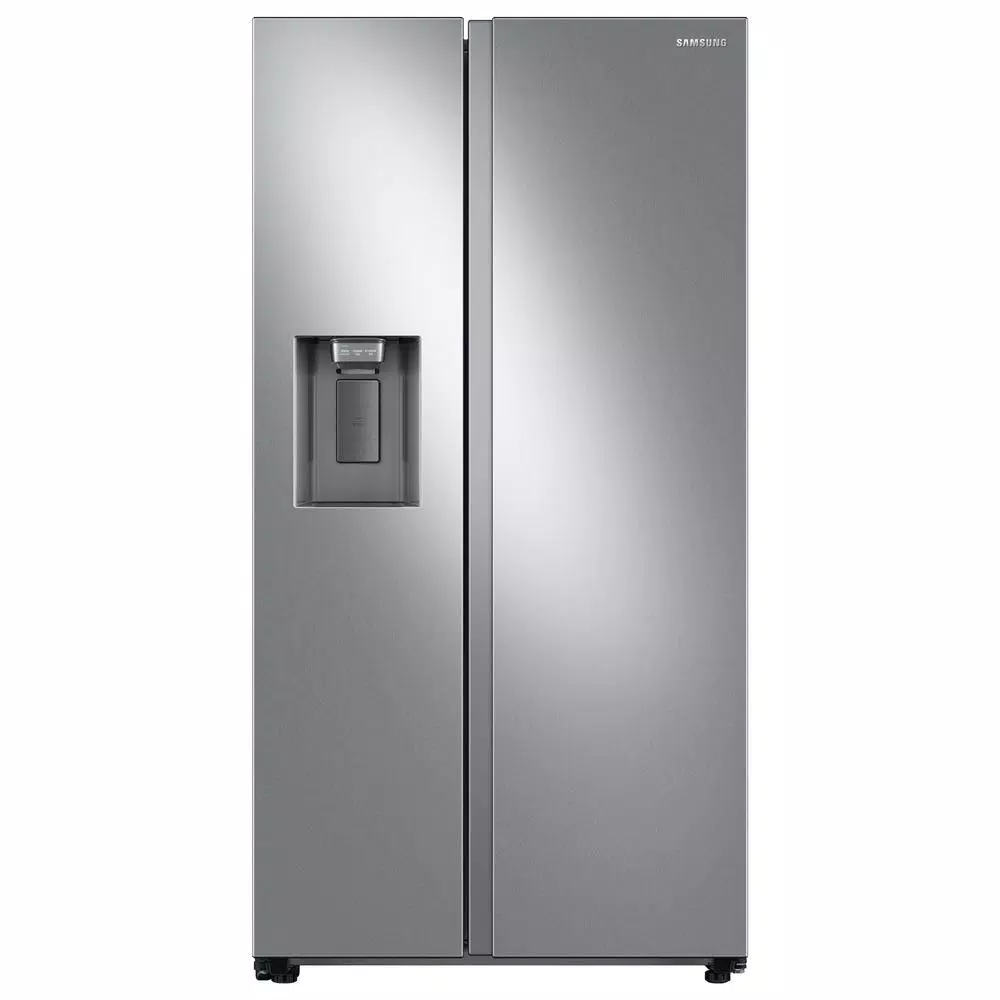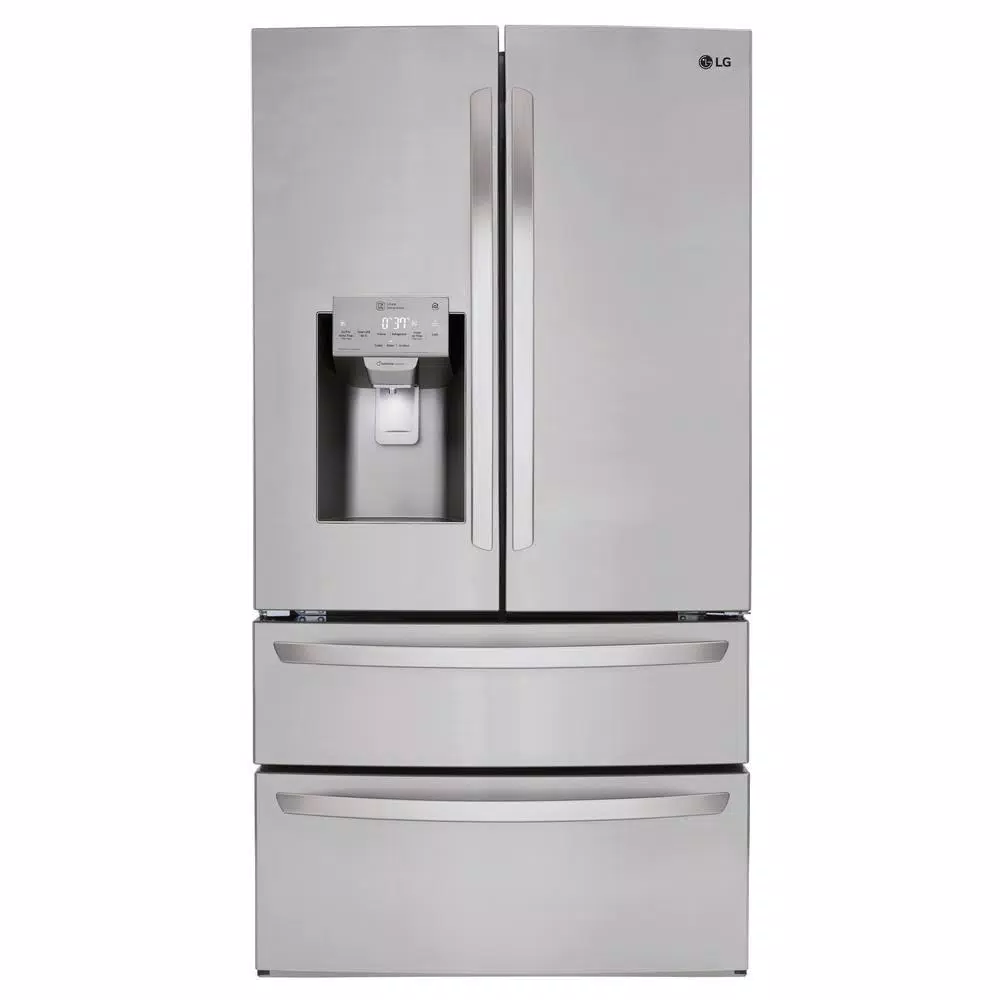Frigidaire 22.2 cu. ft. Side by Side Refrigerator in Stainless Steel, Counter Depth
Adjustable Interior Storage gives you 100 ways to organize. Deli Drawer: Keeps sandwich meats and cheeses conveniently stored. PureSource 3 Ice & Water Filtration keeps your water cleaner.
This Frigidaire refrigerator is counter depth, and can be placed in a cutout for the built in look. It comes with PureSource 3 Filtration for cleaner water and ice for your consumption. Store-More advancements are used in the edge to edge shelving, the humidity controlled crisper drawers, and gallon door bins, allowing maximized storage all over the fridge. Multi-Level LED lighting is used to brightly illuminate the fridge, so food can be found easy. The storage is also adjustable, so you can customize fridge storage to accommodate you. The Ready-Select LCD Controls are easy to use, and put a multitude of options just one button touch away.
- Tall Water and Ice Dispenser makes it easy to fill water bottles, pitchers and carafes
- Ice maker automatically produces ice and eliminates the need to manually fill ice trays
- PureSource 3 Water Filtration gives you cleaner, better-tasting water at your fingertips
- Express-Select Control panel with green LED display 11 Buttons including Ice, Crushed Ice, Water, Dispenser Light, Dispenser Lock and Filter Change Indicator and makes it easy to select temperatures and select options
- 2 Sliding SpillSafe shelves and 1 fixed spill safe shelf help to contain spills, preventing spill over and making clean-up easier
- Large 14.17 cu. ft. fresh food capacity has the space to keep foods organized and 7.99 cu. ft. freezer capacity gives you room for storing all your frozen foods. Counter Depth refrigerator allows for a streamlined look with kitchen cabinets
- 2 Full freezer baskets, 2 fixed wire shelves with 4 white Bins in the door provides organized storage for frozen foods
- Counter Depth refrigerator allows for a streamlined look with kitchen cabinets
- Two-door refrigerator model has the freezer on the left and the refrigerator on the right
- 2-door refrigerator model has the freezer on the left and the refrigerator on the right
- Counter Depth refrigerator allows for a streamlined look with kitchen cabinets
Additional information
| Depth (Excluding Handles) | 27.125 |
|---|---|
| Depth (Including Handles) | 31 |
| Depth (Less Door) | 23.875 |
| Depth With Door Open 90 Degrees (In) | 45.5 |
| Height to Top of Door Hinge (in.) | 69.875 |
| Height to Top of Refrigerator (in.) | 70 |
| Product Depth x Height x Width (in.) | 26.875 x 69.875 x 36 |
| Refrigerator Width (In.) | 35.625 |
| Certifications and Listings | CSA Certified,UL Listed |
| Manufacturer Warranty | One Year Limited |






by John
I got this for my elderly Dad. If functions perfectly and he can reach everything. The selves moving around help him keep the heavy things in easier reach
by Jim
I have had this fridge for six months now. Everything works well. Filter is easy to change!
by Lance
So far it works as advertised. It is roomier than the GE counter depth unit it replaced. The reason for the 4 star rating are the drawers in the refrigerator side can hit the door gasket and damage it if you are not careful.
by Myers
Nice looking fridge with lots of room and a great ice maker. One negative is that it is a bit noisier than most fridges we have had in the past.
by Debbie
Really happy with this new refrigerator! There is a lot of space and it’s a great fridge!
by Apriceson
This refrigerator came with my new manufactured home. It is taking time to get used to the high tech features, but it is very nice and I love getting water through the door.
by Kayla
Fridge came with the new house we bought. No complaints. It is a little smaller than what we would normally use so we have placed this one inside the garage and bought a bigger fridge for the one inside the home.
by Amber
Spacious and looks amazing.
by Reggie
It is overall a good refrigerator I would recommend this item.